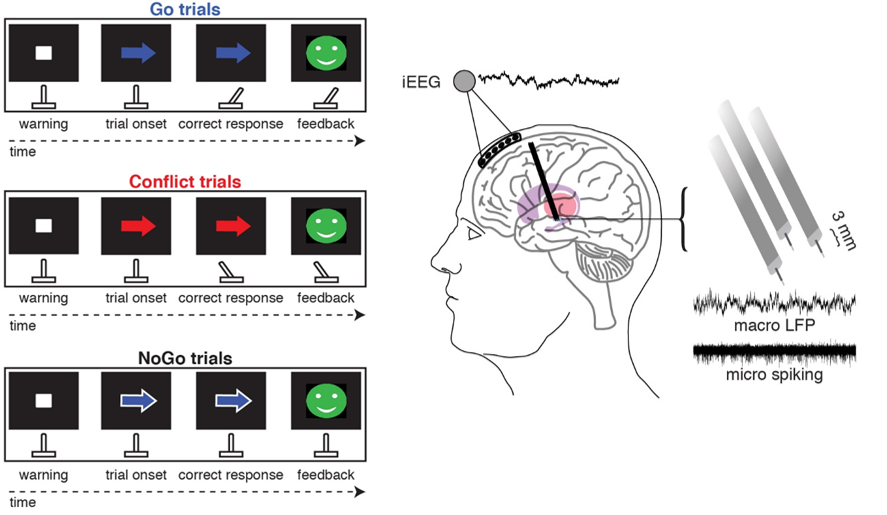Cognitive control involves theta power within trials and beta power across trials in the prefrontal-subthalamic network.
It remains unclear how key superficial and deep brain structures coordinate their activity during the making of decisions. By simultaneously recording electrical signals from both levels in human brains, we show that different elements of coordination involve brain waves of different frequency. This work is important as, eventually, it might be possible to tune electrical treatments to interact with specific brain processes.
There is increasing evidence that the medial prefrontal cortex participates in conflict and feedback monitoring while the subthalamic nucleus adjusts actions. Yet how these two structures coordinate their activity during cognitive control remains poorly understood. We recorded from the human prefrontal cortex and the subthalamic nucleus simultaneously while participants (n = 22) performed a novel task involving high conflict trials, complete response inhibition trials, and trial-to-trial behavioural adaptations to conflict and errors. Overall, we found that within-trial adaptions to both conflict and complete response inhibition involved changes in the theta band while across-trial behavioural adaptations to both conflict and errors involved changes in the beta band (P < 0.05). Yet the role each region's theta and beta oscillations played during the task differed significantly between the two sites. Trials that involved either within-trial conflict or complete response inhibition were associated with increased theta phase synchrony between the medial prefrontal cortex and the subthalamic nucleus (P < 0.05). Despite increased synchrony, however, increases in prefrontal theta power were associated with response inhibition, while increases in subthalamic theta power were associated with response execution (P < 0.05). In the beta band, post-response increases in prefrontal beta power were suppressed when the completed trial contained either conflict or an erroneous response (P < 0.05). Subthalamic beta power, on the other hand, was only modified during the subsequent trial that followed a conflict or error trial. Notably, these adaptation trials exhibited slower response times (P < 0.05), suggesting that both brain regions contribute to across-trial adaptations but do so at different stages of the adaptation process. Taken together, our data shed light on the mechanisms underlying within-trial and across-trial cognitive control and how disruption of this network can negatively impact cognition. More broadly, however, our data also demonstrate that the specific role of a brain region, rather than the frequency being utilized, governs the behavioural correlates of oscillatory activity.

2022. NPJ Parkinsons Dis, 8(1):88.
2025. Cell Rep, 44(2):115209.